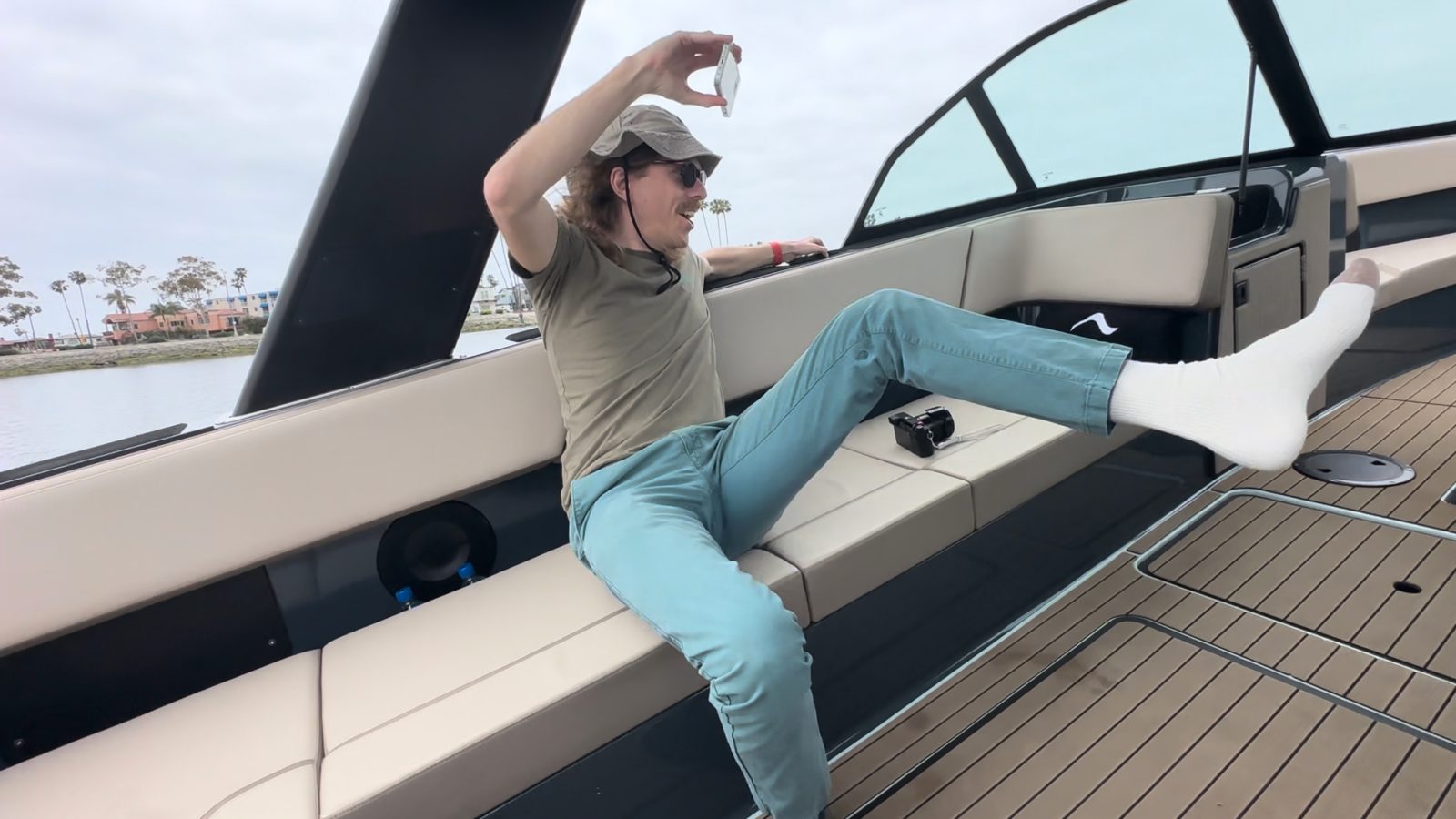
Arc has built the first models of its much-anticipated Arc Sport 500hp electric wake boat, and we got a chance to take it for a quick demo in Long Beach, CA and holy heck, this thing rips.
Arc is a very new company – it was founded in 2021 in Los Angeles, and is targeting the luxury boat market with high-powered electric boats. Its cofounders, Mitch Lee and Ryan Cook, are engineers who met while working at Boeing.
The company has since grown to over 100 employees, and the company boasts that many are former SpaceX, Tesla, and Rivian workers (like, well, every other electric startup).
But it seems to have something to it, because Arc has been able to raise over $100 million in funding so far – not a bad chunk of change to get things started.
The Arc Sport, announced in February, is not Arc’s first boat. It previously released the Arc One, a limited-edition, $300,000 speedboat, of which only 20 units were made.
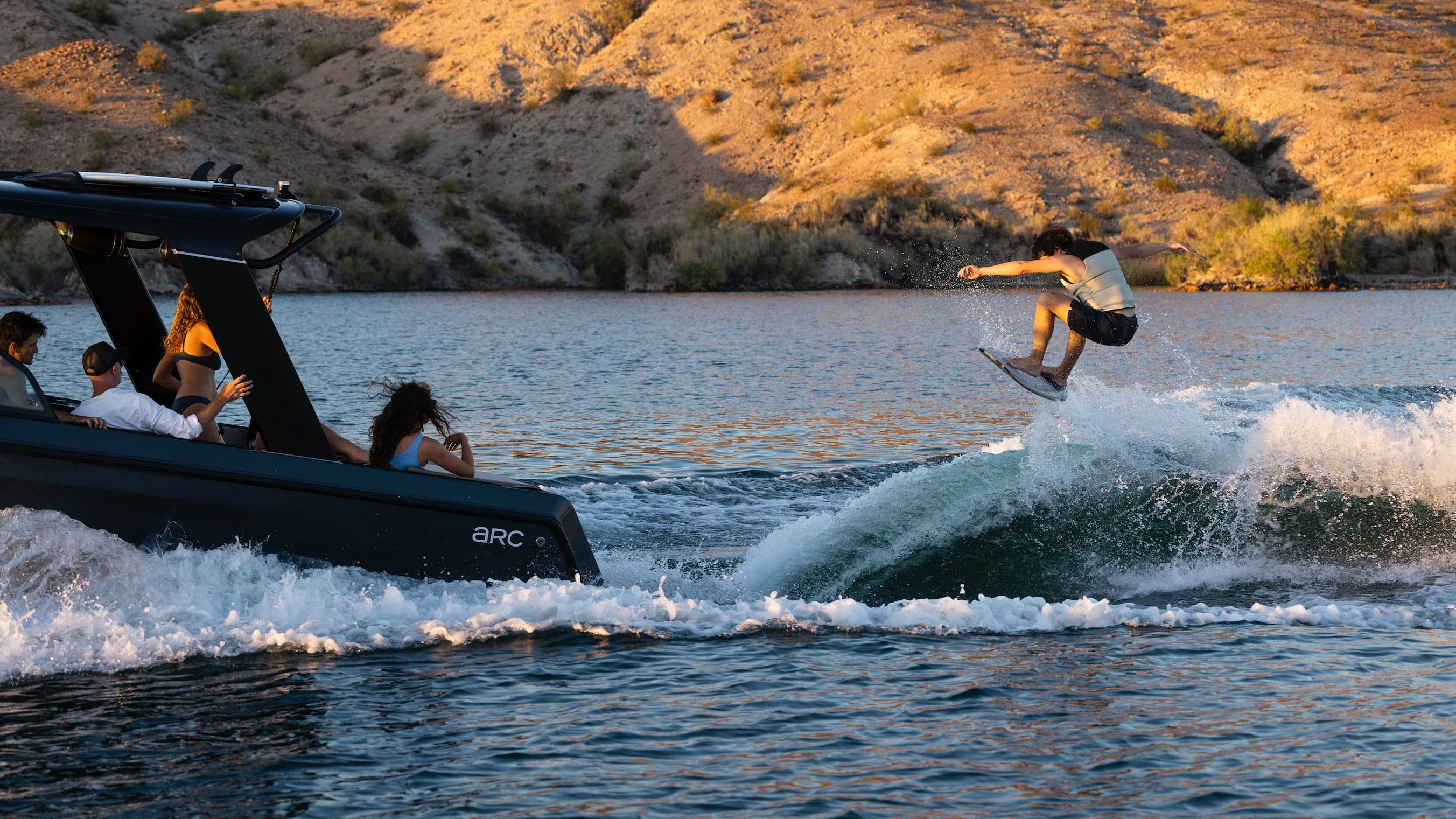
But the Sport is a wake boat, a more specialized type of boat, and it’s a downright steal compared to that model, starting at the low-low price of $258,000. Pocket change, really (although, an early tricked-out “Founder’s Fleet” model with all the options and extras included will cost $322k).
This is by no means cheap, but is relatively competitive with the higher-end wake boats from companies like Nautique or Malibu (Nautique has its own electric wake boat, which starts at $312k).

Wake boats have been growing in popularity lately, both for standard boating activities and for wakeboarding/wakesurfing. Wake boats need high power along with specialized control surfaces and ballast control to help make a large, surfable wake behind the boat.
They also include a tower to attach a tow rope to, so wakeboarders can get up onto the board. The Arc Sport has an adjustable tower which raises and lowers, to offer a higher angle to help pull riders up out of the water, or lower clearance in case that’s needed for navigating around a marina.
Electric drive has a lot of benefits for this application – many of which are familiar from the world of automotive. For one, when wakeboarding behind the Arc Sport, you aren’t constantly choking down fumes and getting loopy from exhaust mere feet from your face in an otherwise beautiful natural lake environment. Which is quite a plus.
The weight penalty of the Sport’s massive 226kWh battery isn’t that significant, either. Wake boats typically benefit from having a lot of mass at the stern of the boat – and will intentionally take on water as ballast to ensure that the rear is as low as possible in order to throw a larger wave. So a chunky battery, sited low in the stern, is fit-to-purpose anyway.
And, like in electric cars, an electric motor has high torque at zero rpm, which means it has… A LOT OF GET-UP-AND-GO.
Arc used a low (2,000) rpm semi truck motor with direct drive (no gearbox) to reduce noise and friction and ensure high torque, which means we literally fell right out of our damn seat the first time they punched it. Arc says it has twice the torque of competing boats, and it sure felt like that.
An electric motor is also easier to put where you want it, so there doesn’t need to be a big, loud, hot, vibrating mass in the middle of the boat (where engines often go), making it easier to use that space for socializing or moving around inside the boat. The motor in this case is pretty centrally located, under the floor of the boat.
The boat is quite quiet at low speeds and some light vibration can be felt through the floor, but it’s a lot less than you’d get from a fossil machine. Though between the noise of splashing water, buffeting wind and 500 horsepower, things get a bit noisier when getting up to the electronically-limited top speed of 40 knots.
I’ve spent a fair amount of time around boats myself, growing up alongside a harbor and in a boating family. Not much of that time has been spent piloting anything impressive, but I’ve been at the helm of a few boats here and there. As for electric boats, all I had piloted before now were Duffys and the like – low-speed cruisers, nothing like this.
After getting a quick demo ride from Arc, it was time for me to grab the helm and go for a spin. I did a few figure-8s, making wake for myself to cut through, and felt that extreme acceleration on my own (which was… easier to stay seated for when I was actually prepared for it).
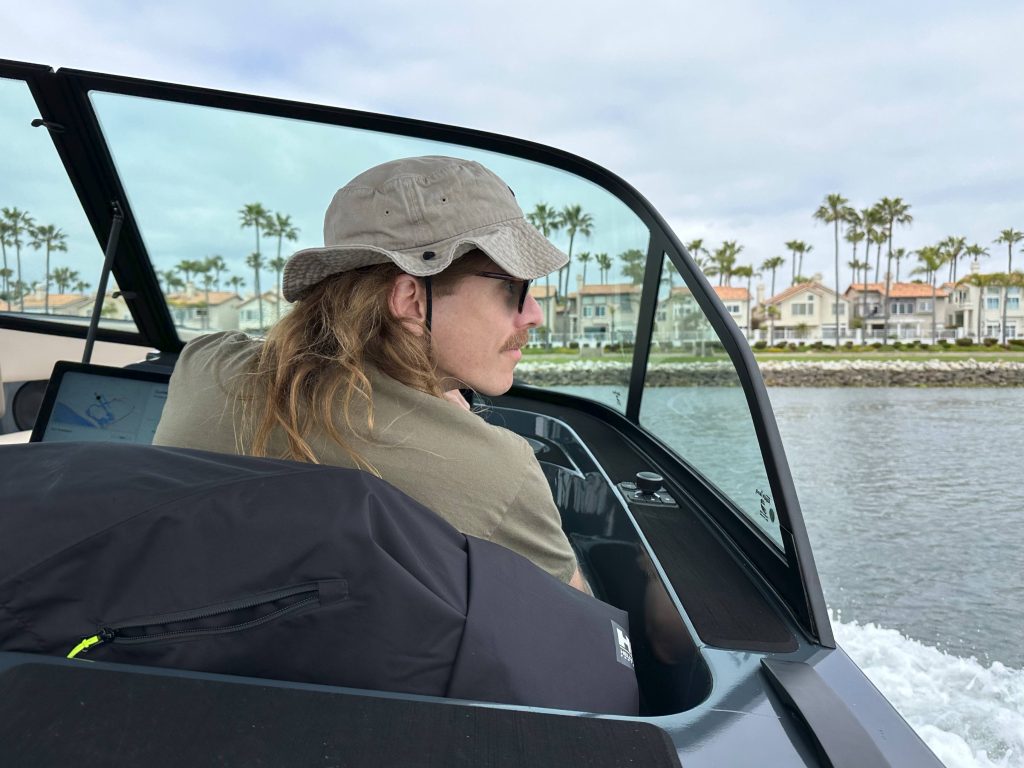
And once I started, I really didn’t want to stop (but then again, that’s often the case for a day of boating, isn’t it?). The boat handled great in the flat water we had it in – and the choppier water once I laid down some wake to blast through.
The captain’s seat was a little tight on legroom, but this is adjustable and Arc is looking to increase the amount of adjustability on the production version. And the throttle was pretty twitchy, which is bound to happen with so much power, but Arc was thinking about smoothing out the mapping of the throttle lever, which I think would be a good idea. Luckily, Arc has complete control over the boat’s software, so tweaks like this are possible and there could even be user-selectable drive modes.

This is another way that Arc distinguishes itself: through a sleek modern interface updatable over-the-air. Some boats have the ability to update maps over the air, but Arc says it’s the first to be able to provide Tesla-like updates to software that’s deeply integrated into the boat.
The UI we saw wasn’t finalized, but what we saw worked well and had various aspects of customizability, like simple controls to adjust the wake, and the pitch of the boat in the water, or to look through one of the boat’s three cameras. One neat aspect was a small red bar on the pilot’s display showing when your steering is centered, which is something that’s easy to lose track of in a boat.
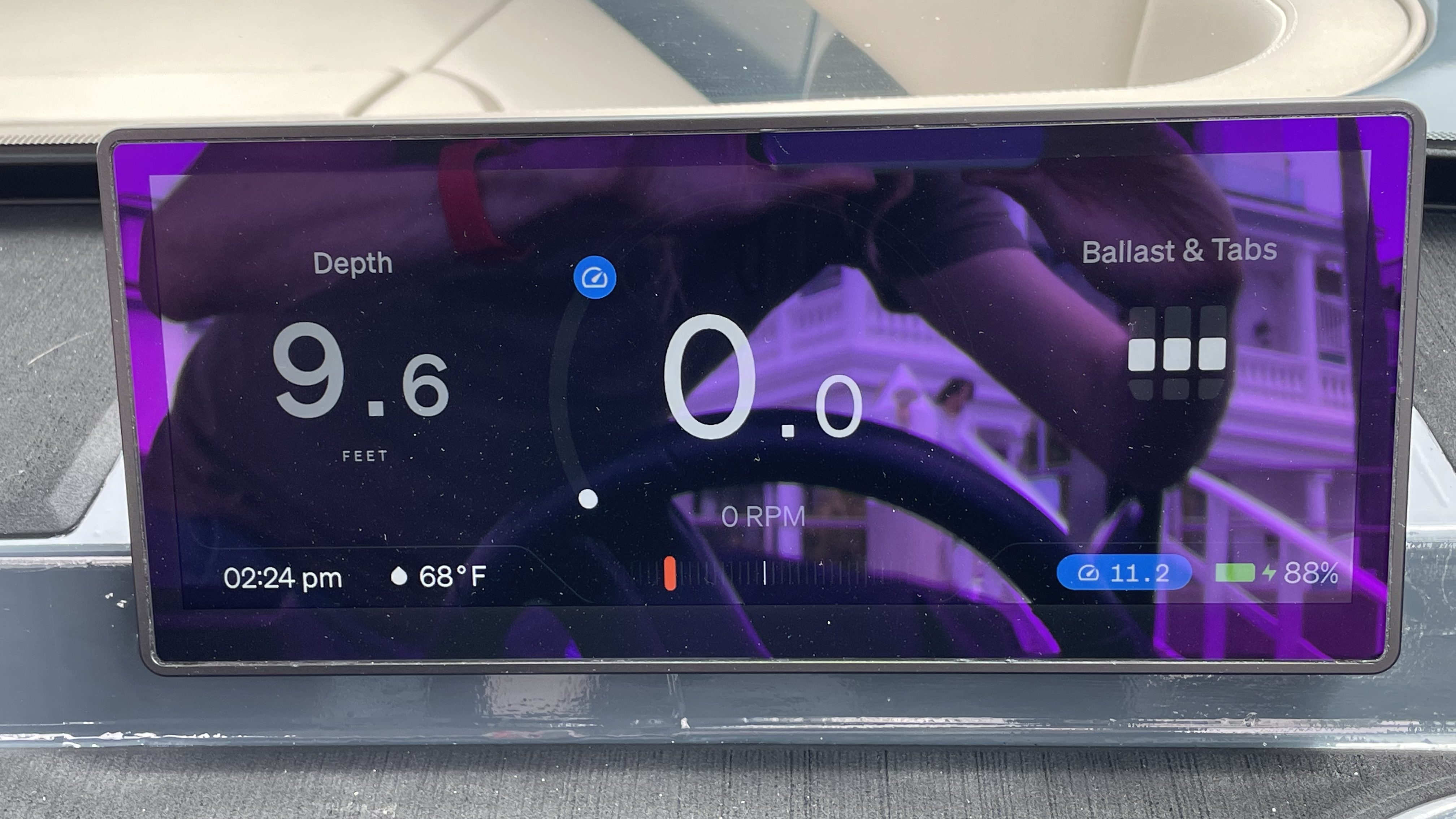
We didn’t get to test out any connectivity/app features, but remote management of charging, checking the cameras on the boat, and so on, seem like natural features that will come down the pipe.
As for the practical parts, the Arc sport is 23 feet long with comfortable seating for 15 (though make sure you’re holding onto something when the pilot punches it), lots of cupholders (Arc told us the final version might even have more), good room for storage under the seats and rear deck (another benefit of electric drive, more storage space where the motor would go), and board storage on top of the adjustable tower.
It also has a set of side thrusters on the bow and stern which help with precision maneuvering, which can be a great help while docking, particularly for less-experienced pilots.
And maintenance should be easier too. Boats are famously a nuisance to keep in good running order, given that they sit parked in a corrosive substance full of strange plants and animals for literally all of their lives. That’s no different here, but at least you won’t have to worry about fuel going bad or winterizing the boat.
Most docks have 240V service for shore power, and Arc’s boats can just stay plugged in (while 7-10kW service means 20-30 hours for a “full charge” of the 226kWh battery, it’s rare that you’ll have a boat out more than ~4 hours in a day anyway). And it’s a lot cheaper to fuel than paying marina rates for gasoline. The Sport is also capable of 225kW CCS DC charging, for the few marinas that have installed DC fast chargers (there’s one in Tahoe).

That brings us to the “range” question, which is a different set of calculus for boats. Arc says the massive battery is good for 4-5 hours of use, though that depends highly on what you’re doing. If you’re just cruising around at low speed, that time will be extended tremendously. If you’re doing constant start-stops or running at high speeds, you’ll use a lot more energy (water is thicker than air after all – there’s a much bigger speed penalty to efficiency on water).
Arc said it took the boat out to Catalina Island, which is 26 miles across the sea from the California coastline. On the way out, they kept it conservative, and used about 10% of the battery. Then they camped overnight and bombed back to the mainland the next day at high speed, and ended up with about 35% left by the time they got back. So that higher-speed trip used ~5x as much energy as the low-speed one did (there may have been differences in wind/waves as well). And 50+ miles on the ocean, with range to spare, is quite a day or two of boating.
But for the most part, these machines will be used on lakes or in calm waters anyway, so it should be more than enough for a great day out.
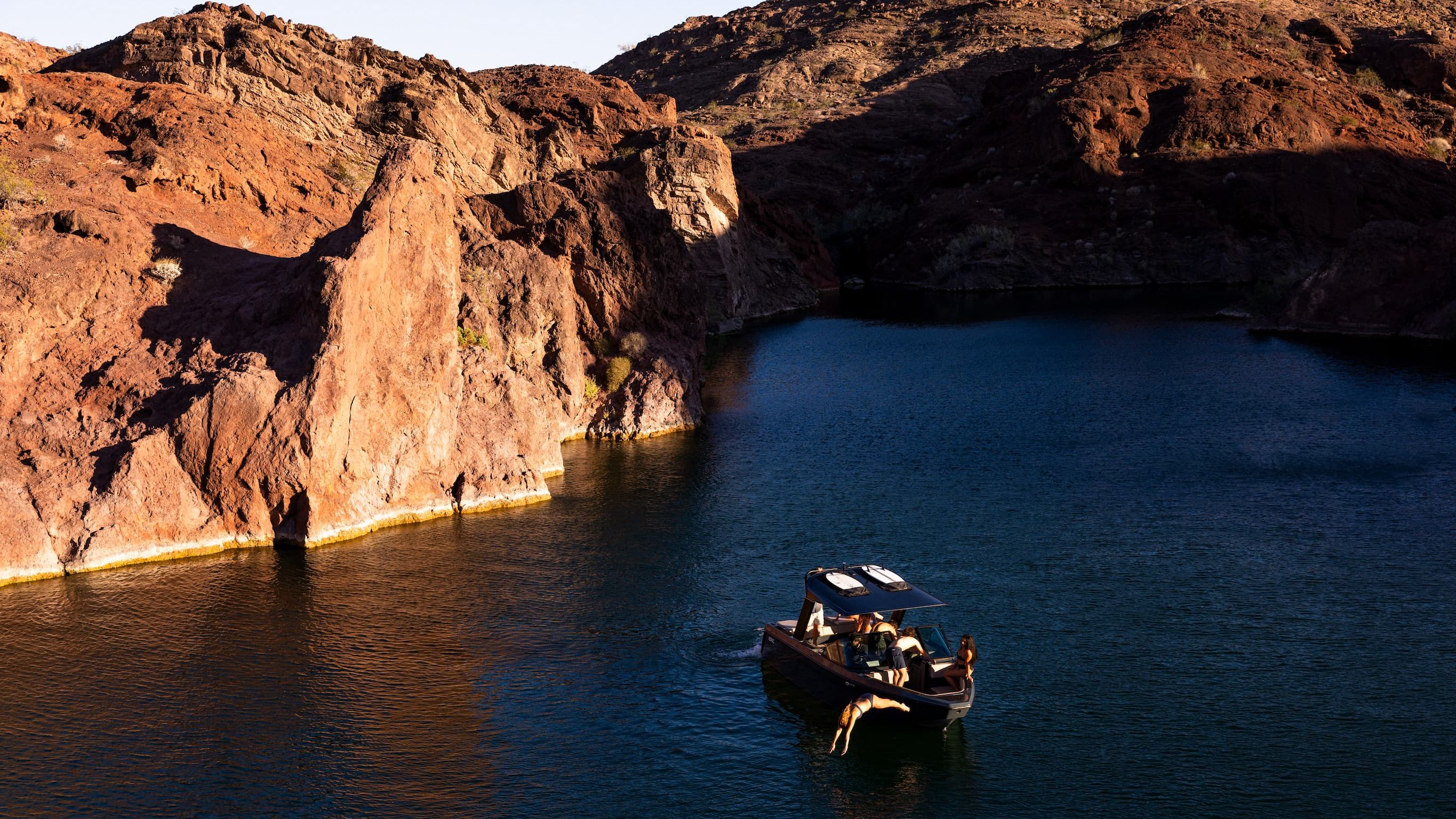
And in a nice lake environment, the underlying benefit of an electric boat becomes exceptionally clear. These are sensitive and contained environments, so adding anything foreign to them can really screw up the ecosystem. The less nonsense we can bring into lakes, in the form of fumes and oil and what-have-you, the better.
The quiet and lack of exhaust really enhance the experience of boating, but unfortunately Arc doesn’t have a solution to one problem: everyone else. While boating around we still occasionally had to smell the stench from some passing boat, and the water surface near the docks was still oily due to the activity of other boats.
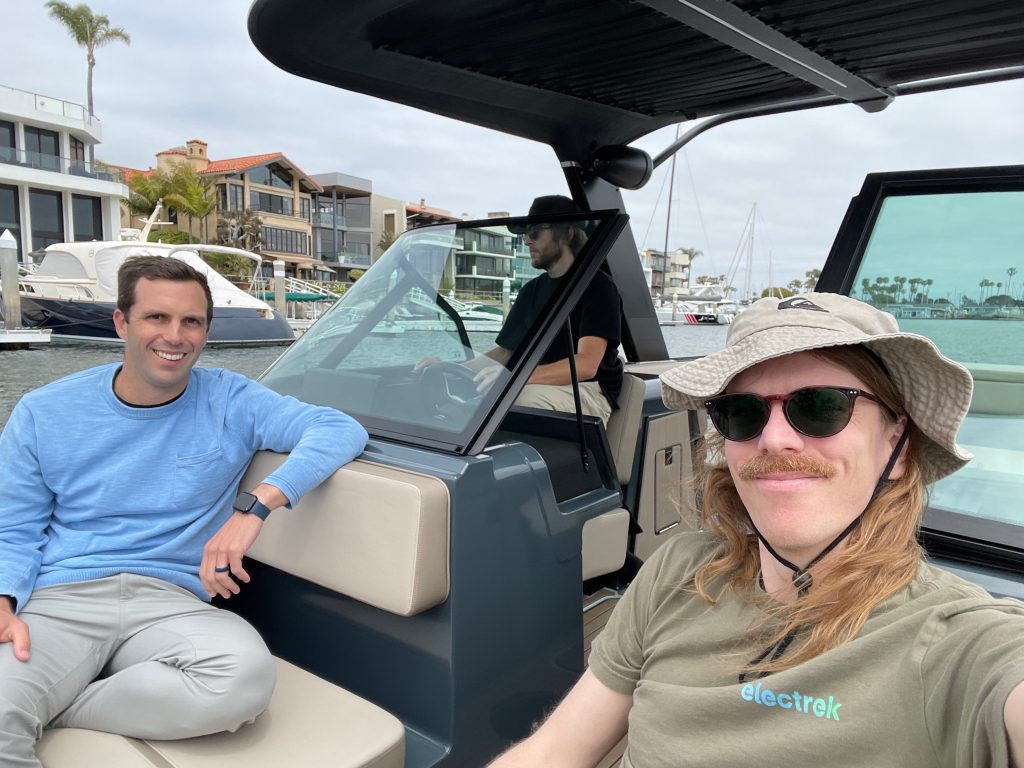
And that’s going to end up changing – some marinas and lakes are already giving out separate electric-boat registrations, and charging significant extra money for launching gas-powered boats due to the environmental damage they cause, which electric boats don’t have to pay. Local pushes to clean up lakes are quite strong – the preponderance of “Keep Tahoe Blue” bumper stickers throughout California suggest that as more options become available, restrictions on dirtier options may well increase.
So lets keep our eye on the prize here – not only is the Arc Sport a pricey-yet-capable toy, it’s also the vanguard of an industry that’s about to change for the better. Our whole Earth is heating up and getting dirtier with every gallon of dino-juice we bleed from this precious planet of ours, so why not keep some of it deep underground where it belongs instead of on the surface of our lakes and marinas.
Arc is kicking off its nationwide demo tour today, which you can sign up for here. They’re still not the full production boats, but they’re close. Arc has started taking orders (you can reserve one for $500) and plans to deliver boats “this year” (with the Founder’s Fleet all being delivered by next summer), with an eventual goal of producing “hundreds” per year.

FTC: We use income earning auto affiliate links. More.






Comments